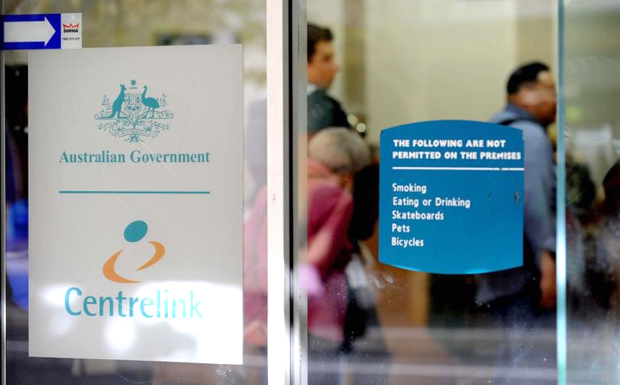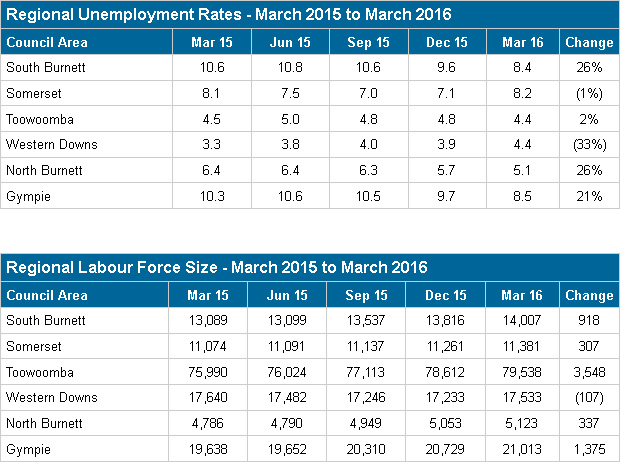
July 14, 2016
The South Burnett has had a 26 per cent decrease in unemployment over the past 15 months.
The surprise finding was revealed in the latest Small Area Labour Markets data released by the Federal Department of Employment.
That data shows that between March 2015 and March 2016, the South Burnett’s regional unemployment rate fell from 10.6 per cent to 8.4 per cent, a drop of 26 per cent.
During the same period, the number of people in the region’s labour force grew by more than 900 (from 13,089 to 14,007) which means 1129 new jobs were created – an average of 75 per month.
Amongst our neighbours, the next best performer was the North Burnett Regional Council where unemployment declined by 25 per cent while the local labour force grew by 337; and Gympie Regional Council, where unemployment rates dipped 21 per cent while the labour force grew by 1375.
In the same period, Toowoomba’s unemployment rate remained almost static while its labour force swelled by 3,548 to almost 80,000, dipping marginally from 4.5 to 4.4 per cent.
And Somerset’s unemployment rate increased from 8.1 to 8.2 per cent while its labour force grew by 307 (from 11,074 to 11,381).
The worst performer over the last 15 months was Western Downs, where unemployment jumped by almost one third – from 3.3 to 4.4 per cent – as the gas boom wound down, with labour force numbers shrinking by 107 (from 17,640 to 17,533).
The South Burnett is also performing significantly better than many larger centres in Queensland.
In Brisbane, unemployment decreased by just 6 per cent last year (from 5.3 per cent to 5.0 per cent) while in Ipswich it fell 5 per cent (from 7.9 per cent to 7.5 per cent).
The turnaround in the South Burnett’s unemployment rate should be good news for the region’s small businesses, even though it remains higher than Queensland’s average unemployment rate of 6.5 per cent.
So should the extra 1100 people who have joined the region’s workforce since March 2015.
- External link: Department Of Employment
























